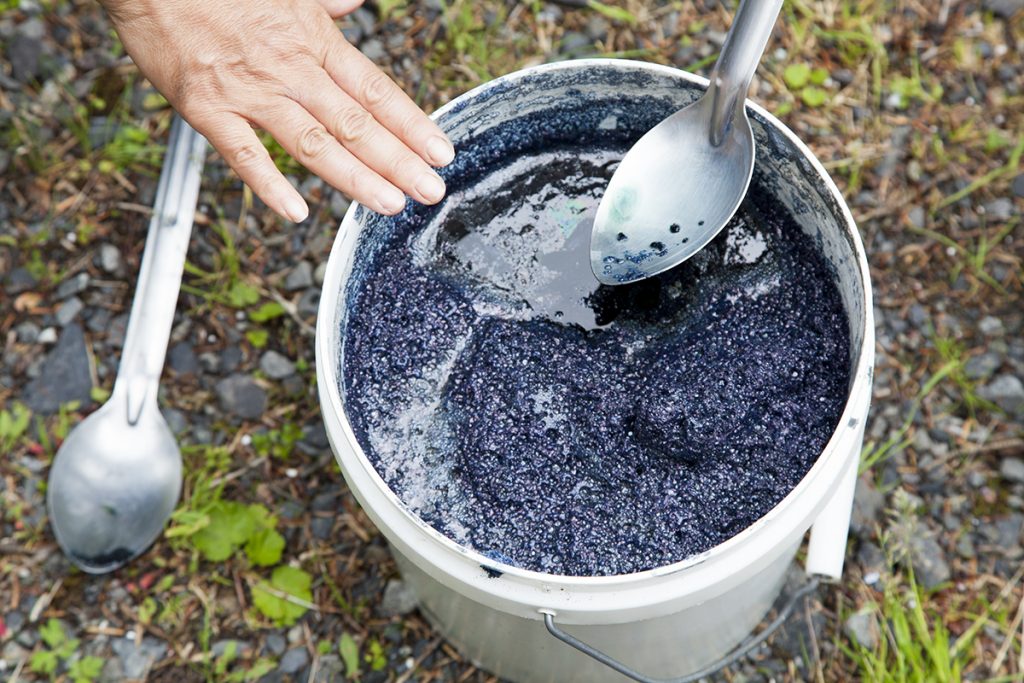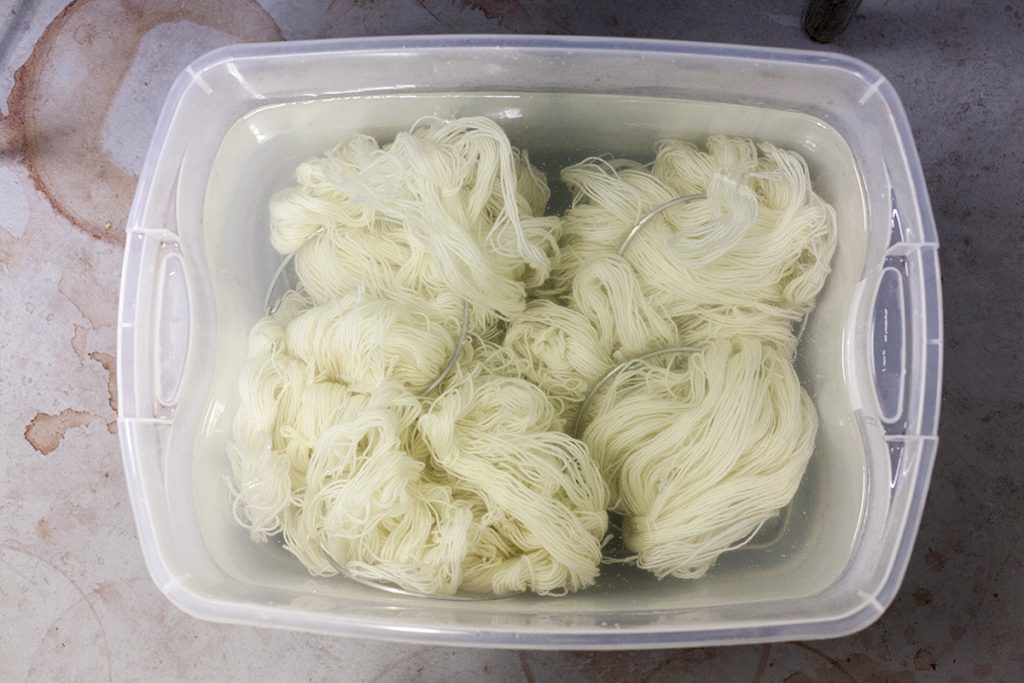Each week, we are emailed with questions from our natural dye community asking simple and complex questions that we thought might be worth sharing. Here are a handful from this week answered by natural dyer in chief, Kathy Hattori, Founder of Botanical Colors:
What type of tool or method do you suggest to use in order to prevent my fabric from touching the sediment at the bottom of my organic indigo vat if I’m doing a long dip (let’s say more than 5 min)? Placing a large strainer or colander at the bottom of the bucket is the best way?
The best way to avoid dragging your fabric or yarn through the sediment that collects at the bottom of a 1-2-3 vat is to do exactly what you have noted, which is to overturn a colander or strainer and place it on the bottom of your vat. Then dip, and keep the fabric gently rotating in the vat while you are dipping. Remember to remove it when stirring the vat to incorporate the sediment (which has undissolved indigo and helps when rebalancing the vat). If you do pick up some sediment on your fabric, you can quickly dip the fabric into some water to wash the sediment away and then oxidize the fabric.
If you are a yarn dyer, you can suspend your skein over the vat using a dowel and our yarn rings. The rings allow the yarn to stay in the vat and you can easily rotate them. If you have extra long skeins, you can double them and shorten them so they stay away from the bottom sediment.
I am interested in using natural dyes with cotton lint and/or sliver, and might want to solar dye. My experience with natural dyes has been limited to dyeing wool and silk. I am curious to learn what I need to do differently with cotton (e.g. mordants, finishing, etc.). Can you provide guidance or direct me to a source for instructions?
Dyeing cotton or other plant fibers requires a different mordant than silk or wool for successful results. Check out our How To section on scouring and mordanting. We give instructions for tannin/alum mordanting and aluminum acetate mordanting, so you can actually try each method and see which works best for you. If you are working with lint or sliver, you should contain the fibers in a net bag so that it doesn’t disintegrate in the process. Expect the cotton to compact itself when wet, so it’s possible that a dense sliver may not have the mordant or dye penetrate to the center. I’ve had to tease the sliver open a bit, and re-immerse it in the dye bath to get more color penetration. One dyer even braids the sliver prior to dyeing and works with the color variation that comes from the braiding.
These mordant methods provide a good base to dye bright and strong colors. Any of the yellows, logwood, cutch and indigo, madder and cochineal produce lovely results by themselves, mixed together and/or overdyed with indigo.
In terms of solar dyeing, it actually might be the best way to really get the cotton fibers saturated with the color. Once you’ve scoured and mordanted, then add your dyestuff to a jar and place your prepared cotton in it. Since the jar is a very contained space, you don’t need a net for the fiber, but if you are using raw dyestuffs, you probably want to contain them in something so they don’t get tangled up in the fibers. Then let that sit in the sun for a day, or two, or three until the fiber is the color you want. The wet color is about 2-3 shades darker than the dry color. Remove, rinse well and let air dry.
I’m using white cotton that has never been used. I’ve talked to some friends who do natural dyeing, and they say I should do a scouring, then add a mordant, and a tannin, It’s a project with kids, so it doesn’t need to be perfect. What’s the quickest, least toxic, and easiest way to prep the cloth.
For best results, you should follow our scouring and mordanting procedures. Scouring uses soda ash, mordanting uses tannin, aluminum sulfate and soda ash. This will give you the best results for your children’s camp.


